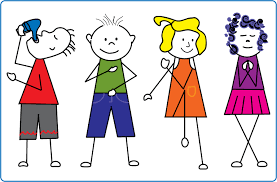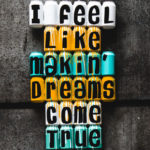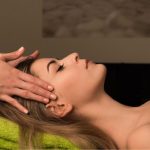Dr Paul Dennison, creator of “Educational Kinesiology” (Edu-K), worked with students early in his career, he found when students were stressed or inactive throughout the day, their learning ability “switched off.” If parts of the child’s brain become inactive, how can they learn? As he began integrating Educational Kinesiology or learning through movement, into his every-day interactions with students, the child’s brain was “awakened” for higher learning.
In Smart Moves, Carla Hannaford says, “Brain Gym® facilitates each step of the process by waking up the mind/body system, and bringing it to learning readiness.”
In our society today, we often see the body and the mind as separate and that movement has nothing to do with learning. Many parents and teachers find physical activities “too simple” and “too good to be true” to actually make a difference in a child’s learning challenges or classroom experience. Hannaford says, “If a program is not hard, time-consuming and costly it appears to have less value. But, as we are able to step past our limited thinking, we are finding out that simple common-sense solutions often produce the most profound results.”
Brain Gym® PACE (Positive – Active – Clear – Energetic)
1. Sipping Water (Energetic)

2. Brain Buttons (Clear)
Brain buttons are meant to stimulate blood flow to the brain and activate the Reticular Activating System (RAS), which is your child’s internal alarm clock that tells the brain it needs to be awake for learning. Its purpose is to awaken the child and help them to stay alert, especially if they are sluggish, fidgeting, or are prone to low-energy or problems with attention and focus.
Have your child or student stand up straight and place one hand over their navel (bellybutton). At the same time, have your child take their thumb and index finger and place the two fingers directly under their collar bone (clavicle). Both hands should be on the tummy and the collar bone at the same time. Have your child or student hold that position for at least 30 seconds or as long as it takes for the child to begin feeling re-energized. This exercise is especially good for children before taking a test or big exam.
3. Cross Crawls (Active)
Cross crawls is one of the most important exercises you can do with your child. The purpose of this exercise is to improve communication between the right and left hemispheres of the brain for higher-level reasoning (critical thinking, problem-solving, auditory, organization and more).
Have your child or student stand up straight and lift their left knee. Instruct them to put their right hand on their left knee, crossing the midline of the body. After they put their right hand on their left knee, have the child switch by lifting the right knee and putting the left hand on the right knee. Movements should be done slow and accurate. Sometimes children tend to do these exercises too quickly and rush through them.
4. Hook-Ups (Positive)
Hook-Ups are specifically used for children or adults that have great amounts of stress, anxiety, meltdowns or sensory overload. It’s a great activity to calm the body and help your child control their breathing. You can complete this exercise standing (preferred), sitting or lying down on the ground.
If your child is standing, have them cross one foot over the other (legs always straight). Now, have your child stretch out their arms and cross them in front of their body. As they are crossed, have the palms of the right and left hands touch together and lock fingers.
Have your child loop the hands underneath the arms and pull the arms close to the chest (twisted into a pretzel).
The second part of Hook-Ups is to unlock your fingers and legs and tap each finger. Hold this position for 2 to 5 minutes or for as long as they need to calm the body.
Do the exercise with the student or your child. Sipping water, Brain Buttons, Cross Crawl and Hook Ups is good for anyone!
In the video below I demonstrate PACE (Positive Active Clear Energetic) I do it slowly… So you can keep up with me!
PACE (Positive Active Clear Energetic) I’m doing it slowly… So you can keep up with mePACE (Positive Active Clear Energetic)
Posted by Facebook on Friday, December 5, 2014








